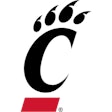Developing Transportation Policies and Procedures

In recent years, administrators in the sport and recreation field have become increasingly worried about their liability exposure in the area of transportation. Their anxiety is justified in all settings - from private fitness clubs and public recreation departments that transport seniors and young children to special events, to schools that use buses to take students on field trips - but probably more so in the college and university realm. With varsity and club teams (and outdoor education programs) traveling to various competitions - across town, across states, between states, and even across international borders - the potential is high for a serious transportation accident to occur.
Consider this scenario. It's a late-February weekend, and ABC University (located in one of the northeastern states) has four varsity and three club teams on the road participating in various competitions. Four of the teams are competing in an adjacent state requiring a hotel layover, while the other three will return late in the evening of the same day they left. While the varsity teams all are traveling by chartered bus, the club teams are using a combination of rented and university vans, with some players driving their own vehicles. At 2 a.m. on Sunday morning, the athletic director receives two telephone calls:
1. On the return journey, one of the rented vans, driven by a coach, has run off the road in a snowstorm.
2. A varsity player has been seriously hurt during a game, and the coach does not have the parents' phone number or the athlete's medical information card.
Sound far-fetched? Not at all.
While many institutions have some travel policies and procedures in place, these tend to not be comprehensive, but rather general in nature - and often part of the university's "policy manual." This may not be adequate given the extensive travel undertaken by some sports teams during the academic year. There need to be more-specific policy guidelines in place designed to minimize the risk of transportation-related accidents; in addition, procedures need to be developed to handle emergency situations should they occur.
While transportation of participants under any circumstances is a potentially risky business, this article will focus on organizations that use their own vehicles to transport participants (and others) to competitions and events. In these situations, the exposure to litigation is potentially very high, and these organizations need to take appropriate steps to ensure that their exposure is minimized.
Employees using organization-owned vehicles to conduct department business is not usually a big issue - until that business involves transporting others. So while an athletic department's exposure is minimal when a coach uses the department van to attend a basketball tournament as part of a recruiting trip, or uses the vehicle to pick up equipment at a local sports store, it is quite a different story if the coach chooses to bring some players with him or her to a basketball tournament.
It's important that administrators understand that the transportation of people (participants, other staff, volunteers, fans, parents and so on) in department vehicles is potentially very risky. Administrators must therefore get as much information as possible about upcoming trips to assess their viability or validity, the restrictions that may need to be imposed, and any special procedures that may need to be put into place.
The following areas need to be considered when developing transportation policies and procedures. These do not cover all possible scenarios, and institutions will need to customize policies and procedures for their specific situation.
On a basic level, you must attempt to answer five questions:
• What is the purpose of the trip? Examples of university-, college- or department-sponsored events would include varsity or club athletic competitions, outdoor recreation trips, the transporting of fans to an away game, or volunteers transporting seniors to a concert. An example of personal use of official vehicles might be a student group that uses a university vehicle to pick up food for a team party.
The reality is, you need to know the purpose of every trip - particularly if you have a trip approval process in place. (You can't give approval if you don't know the particulars.) A "Trip Request Form" like the one on page 72 can be used to capture this type of information. Note the level of detail on this simple sheet of paper. Don't you need to know where the team is going to be staying and have contact phone numbers for the team's competition? Many administrators have no idea how to contact their teams or coaches after they've departed.
• Who is traveling? You need to control who is allowed to travel in the institution's vehicle, whether participants, spectators, staff, volunteers, parents or friends. Are vehicles being used to transport people other than participants - such as coaches making a recruiting trip - across state lines?
This sort of information is essential in the case of an emergency, but it rarely accompanies department vehicles. Do you know the identities of all passengers, their home phone numbers, their medical insurance numbers?
• Who is in charge? Designating a trip supervisor - whether the driver or not - is vital. Someone must be responsible for passenger conduct on board the vehicle and at the destination. Depending on several factors - the number of passengers, the group's age and maturity level - you may need to establish supervisor-to-passenger ratios.
• Who is allowed to drive? A determination must be made whether full-time staff will be the only legal drivers, or whether anyone with a valid driver's license will be allowed to take the wheel. Many organizations allow only the former - and this may be a decision made by your insurance company. Irrespective of who drives, you still need to put strict procedures into place.
• Are emergency procedures in place? What happens if an accident occurs? Is someone on board the vehicle trained to deal with it? It is recommended that at least one person be present who is capable of dealing with an emergency. That person should be expected to recall details of the accident and to file an accident report afterwards, and should possess, at a minimum, knowledge of CPR and basic first aid.
Beyond these basic questions, a host of policy issues need to be addressed in the following areas:
• Vehicles. You must determine which vehicles are authorized to transport participants. These fall into three categories - vehicles owned by the organization, outside carriers with professional drivers and privately owned vehicles.
Outside carriers with professional drivers is clearly the preferred option. Certain situations - for example, transportation of large groups over long distances - often necessitate use of outside carriers, and organizations must ensure that certain insurance requirements (see "Insurance," below) are in place.
You must also decide whether staff, students, participants or volunteers will be allowed to drive their own or someone else's vehicle, or whether travel will be restricted to the use of the institution's vehicles. If the use of privately owned vehicles is allowed, you must determine whether drivers will be allowed to transport others. Saying "yes" to privately owned vehicles tends to increase an organization's exposure to liability, and it is important to put policies and procedures into place that specifically target vehicle insurance, inspection and maintenance requirements.
Inspections and maintenance are a particularly knotty problem. It is best to determine whether pre-trip inspections are required. A common procedural requirement for drivers of leased or organization-owned vehicles typically involves using a checklist to inspect specific mechanical aspects - tires, wipers, lights, horn, first-aid kit. A checklist can also be used to ensure that certain trip documentation (see "Documentation," p. 73) is on board the vehicle.
Department- or organization-owned vehicles should be inspected and maintained by someone competent to do so, and all records kept. For vehicles not owned by the department or organization, some groups require submission of these records, although doing so for all private vehicles can become a logistical nightmare. This fact eventually causes most groups to reconsider why they are allowing use of privately owned vehicles in the first place.
• Drivers. If you do not (or cannot afford to) use an outside carrier with a professional driver, who are you going to allow to drive? You must decide whether you will restrict drivers to full- or part-time staff, or whether students, volunteers or parents will be allowed to drive. While students driving other students potentially increases an organization's exposure to liability, for some institutions this is a reality - doing otherwise means programs simply won't happen. Organizations in this situation need to have very clear policies and procedures and insurance in place to ensure that their exposure is minimized.
In addition to "who," there is the question of "what" - what qualifications do you consider the minimum for authorized drivers? You may, in addition to requiring that all drivers hold a valid driver's license, wish to prohibit drivers whose records include a DUI, reckless-driving or negligent-driver citation; those who have recently been fined for speeding or other moving violations; and/or those with any history of vehicular accidents.
You must also determine what training or orientation is required for authorized drivers. These can include tests of state regulations, your organization's policies, emergency procedures, first-aid/CPR procedures and the test driving of vehicles prior to their use.
Any department or organization transportation policy must comply with relevant federal and state regulations. These typically encompass guidelines governing the number of passengers, the use of seat belts, the number of allowable driving hours and so on. In addition, organizations typically develop their own transportation-related policies addressing issues such as mandatory rest stops, distance/total trip time after which professional drivers are used, the ingestion of alcohol at any point during a trip, pickup and drop-off locations, parental consent of trips, the allowing of participants to return home by different means (if this is allowed, an official release should be required), and supervision requirements (establishing supervisory ratios may be appropriate).
• Insurance. Determining what type of insurance and how much is best handled by your organization in consultation with its insurance companies.
When using outside carriers and professional drivers, organizations should ensure the carrier has adequate vehicle insurance and comprehensive general liability insurance. In addition, outside carriers should be required to name your organization as an "additional named insured" to protect you from liability arising out of the operations of the carrier and its employees.
When an organization allows the use of privately owned vehicles, determine if the vehicle owner is responsible for carrying sufficient (vehicle and liability) insurance coverage. If travel will take participants across state lines or out of the country, you'll need to determine if additional insurance is necessary (particularly in the area of medical coverage).
• International Travel. Out-of-country travel represents an additional layer of complexity. Organizers of these trips need to carefully research and develop procedures covering visa/entrance requirements, medical requirements such as immunizations, additional medical insurance requirements, the prevailing political situation in the country to be visited, and special precautions needed to be taken (crime-prevention strategies, for example). Some excellent Web sites are available to assist in your preparation efforts (for example, the Indiana University Office of Risk Management has a "Travel Tips" page at www.indiana.edu/~ riskmgmt/travel.htm).
• Documentation. Travel procedures require careful documentation. Often, checklists are the best way to capture information. In addition to the aforementioned "Trip Request Form," consider using each of the following, and be sure that copies of each accompany the vehicle: 1. Passenger checklist (providing medical information and specifying a person to contact in case of emergency) 2. Key contact checklist - at home (program administrators) and at the destination (venue, hotel, local hospital) 3. Emergency procedures (for breakdowns and accidents) 4. Accident report forms (these typically include details of the accident and injuries sustained by all passengers, names of individuals who provided first aid, names of attending physicians and signatures of passengers declining first aid).
In addition, consider using driver information forms, participant travel release forms (see sample on page 72) and a pre-trip vehicle inspection checklist (see sample on page 72).
In developing a transportation policy, it is very easy to lose sight of the overall objective - to get participants from A to B (and back to A) safely so they can play. To avoid creating an administrative hassle, it is important that transportation policies are clear and that procedures are simple and manageable.
The consequences of a vehicular accident involving multiple victims represents your worst nightmare. It is therefore critical that positive, proactive steps are taken to implement a reasonable transportation policy that minimizes the risk of injury to participants - and at the same time significantly reduces your exposure to litigation.




































